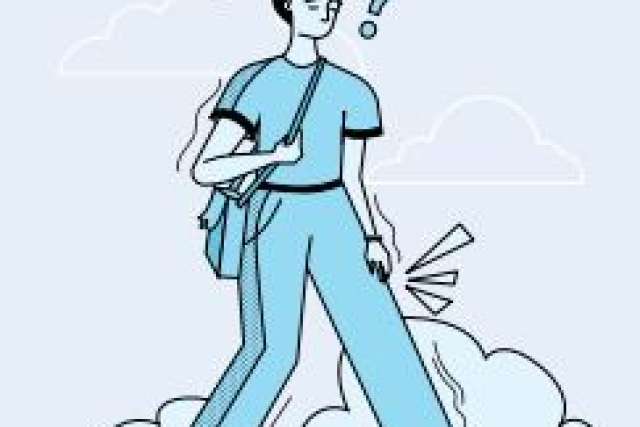“Ask the Doctors” is a nationally syndicated column written by Eve Glazier, MD, president of the UCLA Health Faculty Practice Group, and Elizabeth Ko, MD, medical director of the UCLA Health Integrative Medicine Collaborative.
DEAR DOCTORS: I walk about two miles to my job when the weather is good. Lately, I get cramps in my left calf and right thigh, but they go away if I rest. We’ve got a wellness program at work, and the nurse says it sounds like peripheral artery disease. What is that? Can it be cured?
DEAR READER: Peripheral arterial disease, or PAD, occurs when a narrowing of the arteries impedes the flow of oxygenated blood from the heart to the limbs. It’s a common circulatory problem that affects more than 8 million people over the age of 40 in the United States. Although PAD can arise in the arms, it’s seen most often in the legs. The arterial narrowing is the result of an accumulation of plaque within the artery walls. Plaque is a fatty, sticky substance made up of cholesterol, calcium, cellular waste products and the byproducts of inflammation. It hardens over time, and the build-up narrows the arteries. This is a condition known as atherosclerosis, and it is the most common cause of PAD.
Many people with PAD have no symptoms. About one-fourth experience muscle cramps, typically in the calves, thighs or hips. The cramping occurs during exercise, because the arteries that serve the leg muscles have become too narrow to keep up with the demand for oxygenrich blood. The pain often recedes after a few moments of rest as the need for oxygen declines. Additional symptoms of peripheral artery disease can include leg pain that persists even at rest, numbness, slow-healing cuts or wounds in the feet or toes and a decrease in body temperature of the affected extremities. Risk factors for the condition include high blood pressure, smoking, type 2 diabetes, high cholesterol and being age 65 or older.
Diagnosis includes a medical history, a physical exam and detailed information about your symptoms. The doctor will assess the pulse in the affected limbs and compare blood pressure in your lower leg to blood pressure in your arm. It’s possible a scan to visualize the arteries will be needed. Treatment focuses on stopping the progression of the disease, and also managing or reducing existing symptoms. The biggest risk factor for atherosclerosis, and thus for PAD, is smoking. For smokers, it’s essential that you stop. As we’ve discussed here before, quitting can be hard. Please enlist the help of a health care provider. They can help smokers to craft a plan, offer guidance on appropriate cessation products and strategies, and also offer ongoing support.
Regular exercise is essential, as well. This may take the form of something known as supervised exercise therapy. These targeted exercises, done under the guidance of a specialist, have been shown to help reduce symptoms and improve quality of life. A diet and medications to address high cholesterol and high blood pressure are often part of treatment for PAD. If these treatments aren’t helpful, surgical repair of blocked vessels, known as angioplasty, may be needed. Since the symptoms that you have described match those of PAD, and the condition increases the risk of heart attack and stroke, we think it’s important for you to be seen by your health care provider.





